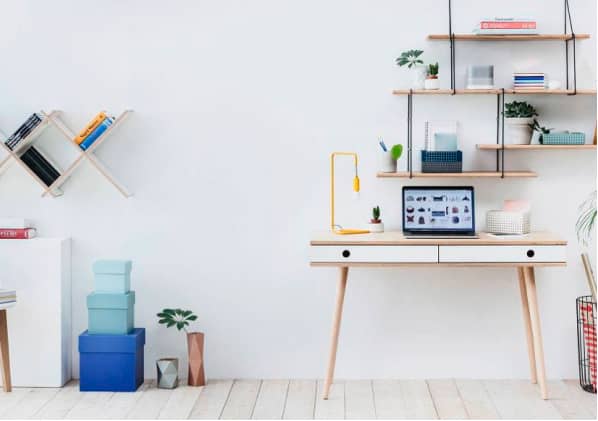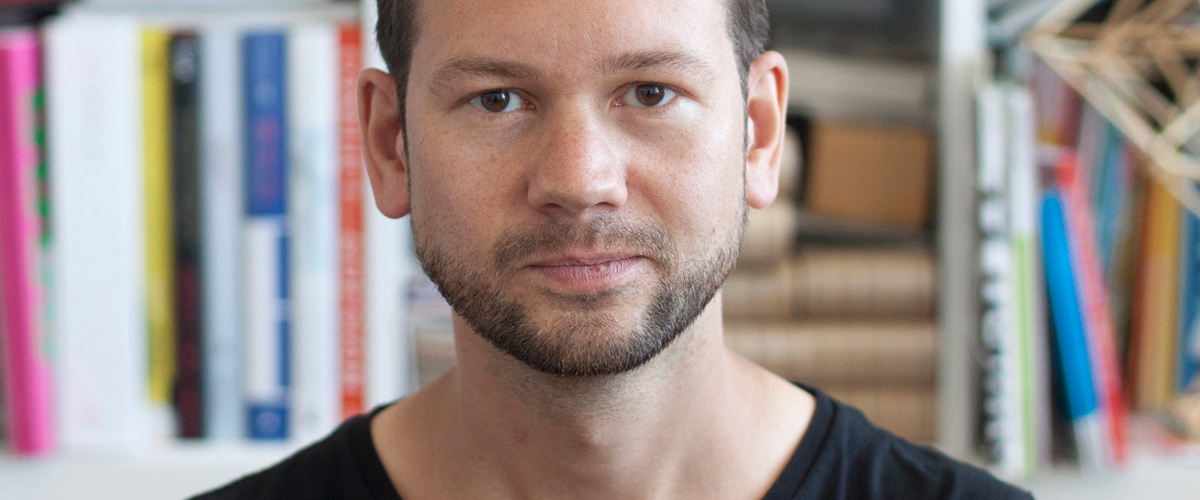
Designer Veiko Liis (courtesy of the designer)
Veiko Liis is an Estonian designer who leads different product developments in small practice based in Tallinn. He has completed a variety of projects, including well known milk packaging – a project that explored the folding form design traditions. Veiko’s most recent project is a DIY furniture Jovvut. Besides his work as a practicing product designer he illustrates storyboards and books. Veiko Liis’ latest contribution to the Radis furniture — a shelf LIFT got 2019 Special Mention Award by well known German Design Award.
To learn more about the designer’s work and influences, Maris from Radis Furniture spoke with Veiko Liis in Bologna, who, among other topics, discussed his initial interest in design and his upcoming visions in contemporary Nordic hygge’ living. Read the interview in full below, and see Radis furniture short coverage of the shelf work here.
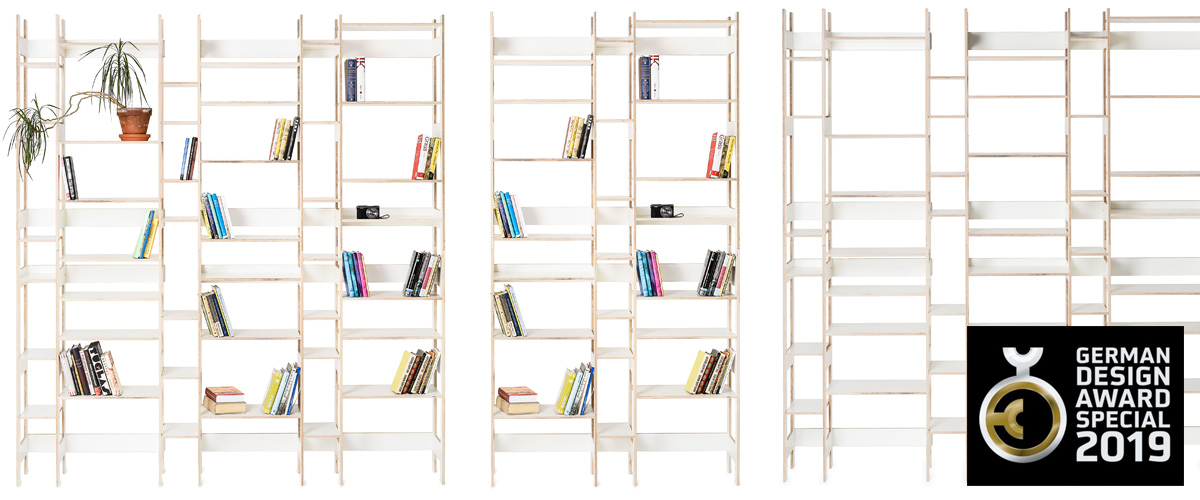
2019 German Design Award Special Mention went to LIFT-shelf (Radis Furniture)
Maris Vahter (MV): Please can you introduce yourself?
Veiko Liis (VL): I am a designer from Estonia. A graduate of MA degree at the Estonian Academy of Arts. Did Erasmus exchange studies in Nantes, France, and internships in Eindhoven, the Netherlands. Must say, have certainly influenced creativity and style. After my studies have lived in Berlin, Rotterdam, Amsterdam. I have been giving lessons in universities both in Berlin and Tallinn. In addition to design work, I also do business with developing my own creative space, Jovvut.
MV: What’s the best moment of the day for you?
(VL): The best moments are when all fixed-term commitments are made, and you can dive 100% into creativity, so you even forget the time and space. To create such moments, it is usually a hassle in one way or another. You can’t do creation if you have 2 or 3 hours for it. You have to forget the time for being creative. But if you really have to catch a train or run to a meeting, then it may happen that this short time does not allow you to get deeper into creativity and that something must wait for the next moment to dive into this timeless thought.
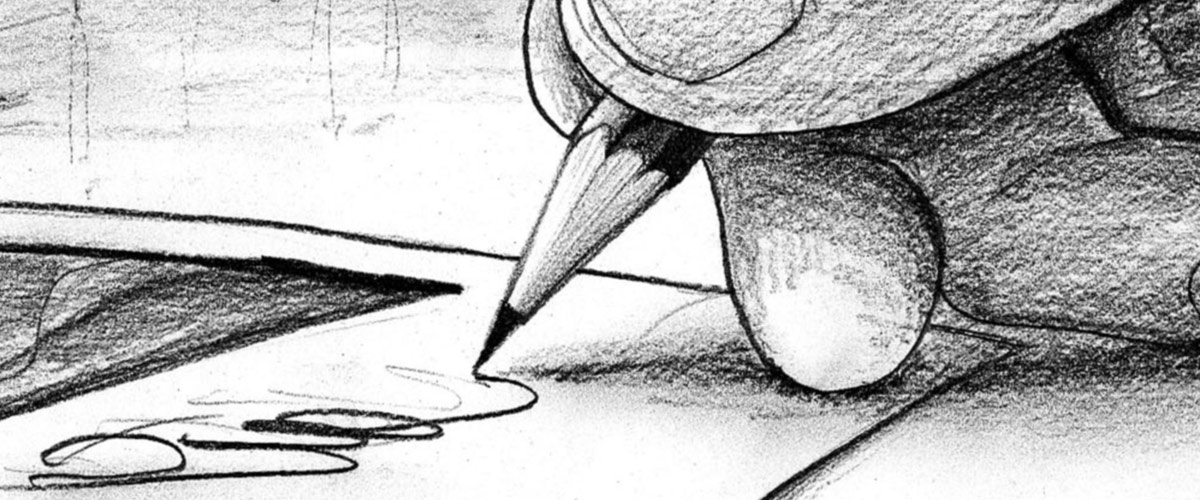
Veiko’s drawings for storyboard (courtesy of the designer)
MV: What kind of music do you listen to and to you have a good playlist or more?
(VL): In fact, I enjoy the most silence or the sounds of nature. On longer trips, if I can deal with some design problem at the same time, I listen to the surrounding sounds with interest. Sometimes, when I draw, I listen to the 60’s POP and Rock. In general, all music, created after the 60s or 70s, leaves me relatively cold. Classical music is also too intense to work because it requires a certain commitment to listening. In this respect, it is honestly good if the music is somehow away from any sweet rhythm so that it does not interfere directly to my workflow.
MV: What type of clothes do you avoid wearing?
(VL): When I buy clothes I proceed from an environmentally friendly way of thinking that things have to last a long time. I think I might avoid uncomfortable clothes. When buying clothes, durability is definitely the first thing I mean, all that refers to quick wear or even failure, stays out of my reach for good. I also do not like to wear clothes that are very colourful, with patterns or letters, because they do not make me feel like myself but just as a canvas for their designer. As according to my profession as a designer, must say, the favourite tones stay black or gray. But if the item is truly very comfortable, the modest colour can be good as any.
MV: When did you become interested in product design?
(VL): It may have been when I was 4 or 5 years old if I discovered that this fascinating artificial world has been somehow created and it can be pretty much drafted from a scratch. Since then I have wanted to be a designer. While physics and mathematics were the favourite things in school, I can use them in my current work on a daily basis. There is no one in our family who has been very interested in art or have come with such a background. The entire primary school and school after was a knowledge of teachers that I was going to study physics. Going to tests at uni, I still wasn’t very engaged in any art besides drawing, and it was back then just a childhood idea to be formulated in a way. I have always liked to think about things peacefully and slowly. Tempted by such philosophy to see the opportunity to question how far I can push. You never know what you can get out of a concept. Sport also doesn’t like me because it requires skill or strength and it seems that I don’t have a necessary one. At the same time, I like to walk long distances as it helps to make things more clear while being occupied with some design matters. Sometimes, for me, traveling somewhere in some city, it is quite common to walk 20 or 30 km a day to get to know to feel aspects of the surroundings, understand the motives why one or another object in the city is just so designed and not otherwise.
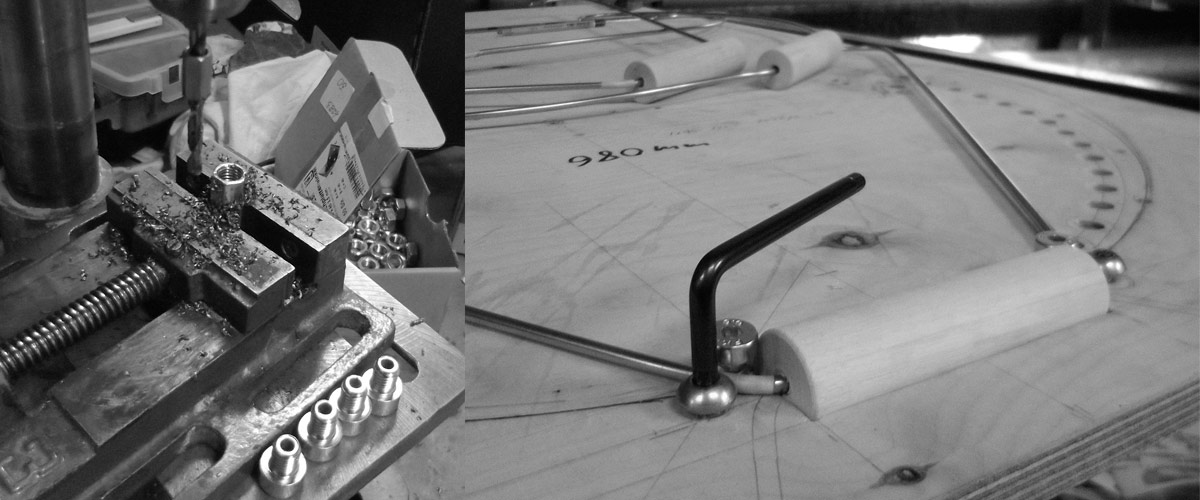
Prototypes (courtesy of the designer)
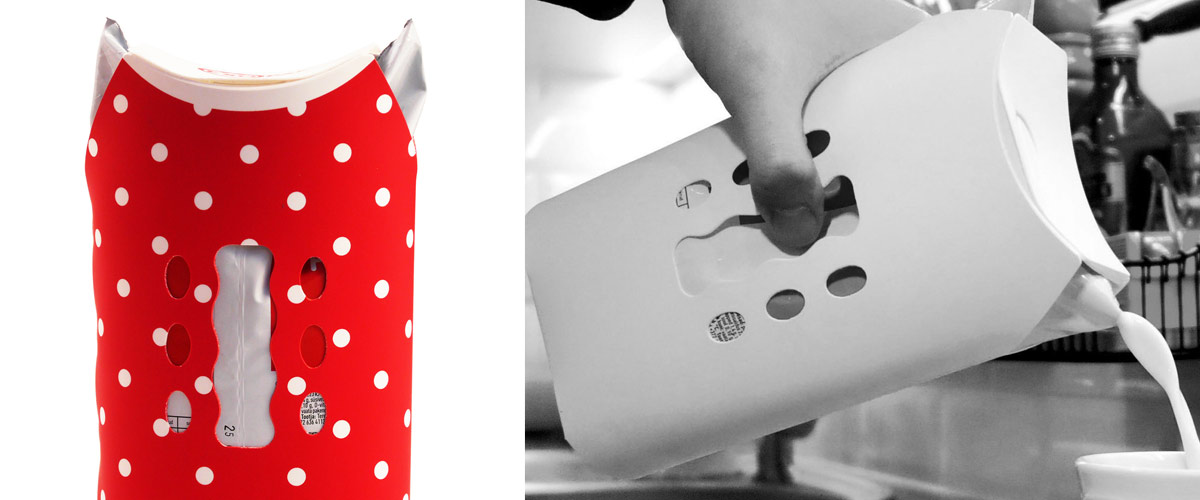
Foldable milk packaging Exopak (courtesy of the designer)
MV: You became well-known through your early works — foldable milk packaging are some of your first defining projects. What led you to choose such a certain kind of sculptural quality design language?
(VL): When I designed a foldable milk jug, the appearance of the thing or the sculptural form was the last thing I thought about. I wanted to create a physically well-functioning milk package pouch holder out of thin and flexible material. I made over a hundred different prototypes to test my ideas. It’s all about the physical form. The prototype is always the most important criterion of truth in the field of design. In the process, the prepared object must be put in the middle of real life to understand better, as what should be further changed. When you try to start using some new thing on a daily basis, you usually see immediately all the bugs that need to be fixed. Designer’s education is accompanied by an extremely critical attitude to all the things he or she has created. Reality is, that the success of the milk jug surprised me at first. But in retrospect, the success of this product could perhaps be explained by the fact that users are proud of themselves. There should be more of this critical engagement over the Tetra packaging matter that has become more and more popular in the western world, as it is a much bigger problem for environmental sustainability (editors note: only 20% of carton part is being recycled globally). It is still cardboard that’s covered with foil and polyethylene. Perhaps this foldable jug could just be the innovative way of thinking that can uphold the valuesmost users already had and it has brought them in a new shape.
MV: Keeping certain control with engineering side is a defining feature of the compositional character in your work, which is also aesthetically charged. But how you give to design a lot of freedom or how do you achieve freedom in each project?
VL: If the laws of physics and the nature of the material provide you a certain framework, then inside there is a certain playground, that is absolutely free. So the greatest freedom is to interpret the forms that have already been seen in a new way or to use them differently in new situations. In this respect, the person situated at the center of the design is the one who uses a piece or another in his everyday life. Taking people’s wishes and needs into consideration is the most delightful part of the design effort. Sometimes you are dealing with design issues that have not yet been revealed by the users of the product. It can mean that the driving force behind the design may be unconscious ideas about the needs of users or their subconscious desires. In design, my only freedom is to guess and interpret user needs as much as I can. Later on, by showing the newly created design to others, that reality check always appears in people’s eyes if they are shining or not. So, in this sense, you are not depending on as much in engineering capabilities but on others, how they interpret your creation. Eventually, these things gonna be theirs, that they wish to use every day.
MV: You are currently travelling with backpack in Northern Italy. do you collect inspiration from your trips or does inspiration come most naturally when you don’t think about it?
(VL): I can’t call it inspirational because I think inspiration can or not to come, regardless of your efforts. Situating currently in Italy has actually an explanatory reason. Since my new furniture collection got a warm welcome here, was there no reason to develop it further elsewhere. I think the design needs to be flexible and when some events take you on a journey, it is there in that place and moment that you have to give your best.
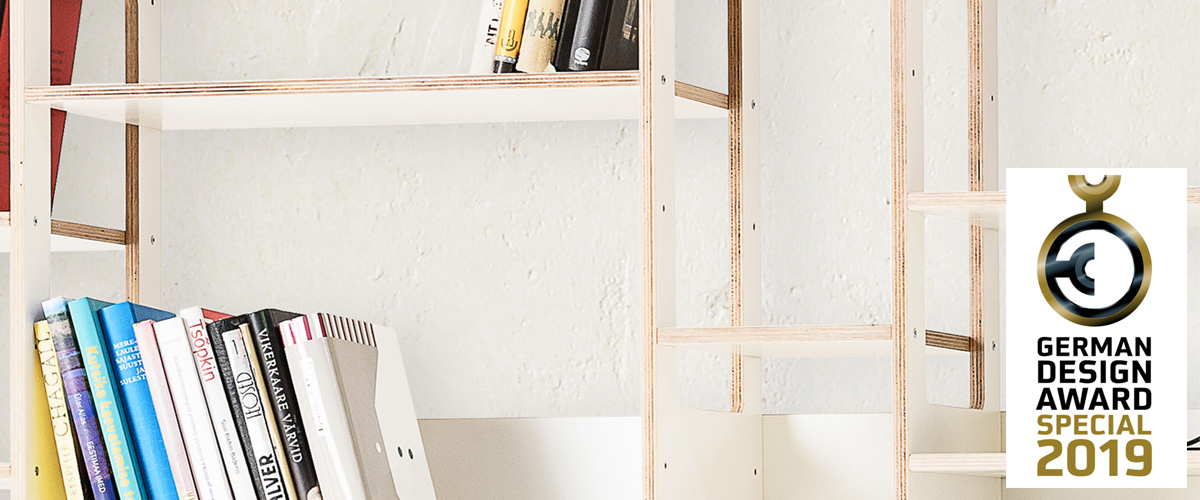
LIFT-shelf (Radis Furniture)
MV: What made you decide to make LIFT shelf?
(VL): The LIFT shelf was born from the reflection on how much we really need things. In fact, we can manage with quite a little. Books, indoor plants, and small important pieces are perhaps the ones you want to be located in a safe small place. The LIFT shelf develops from the minimalistic desire – less as much as possible. The desire for a little dwelling is embedded in it. At the same time, you can’t organise without things completely. When moving into new premises, favourite books or favourite items will gradually sneak into our lives. The LIFT shelf is designed to be beautiful both as without and packed by items. It’s a sculptural part of the wall that you can increase/decrease as you wish. Its purpose is to provide enough freedom and space to you and for the items placed there. The LIFT shelf is definitely not storage for things. It’s best to be placed in a sunny room where the rays of light falling through the shelf and change their shape during the day. The LIFT is designed where life is perceived in very different shades and the books have an important role.
MV: What do you think the duty of design is?
(VL): I think things/objects created in the design process could help their users to understand their daily activities. What are their new challenges in life? What makes them happy or unhappy? What is their relationship with most of their surrounding? Being alone or with others, things around us are either supportive or vice versa to our meditation. Whether it’s a pencil, a paper, a computer or a phone – its design affects us in any case. This is always a fixed value that cannot be changed at any moment. The environment around you affects you every step of the way. The biggest design is the personal (purchase) decision of each person to determine the quality of the environment around him.
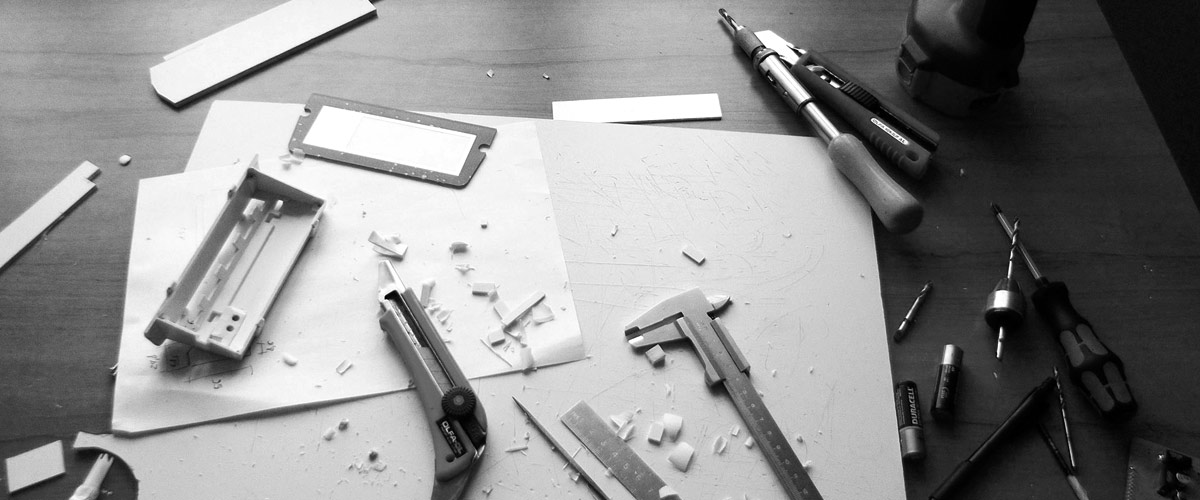
Prototypes (courtesy of the designer)
MV: When making connections across different discipline and since people starting to get more into this Nordic hygge’ lifestyle, how design or materials can possibility to engage with this and really create a new body of work in your opinion. Can at least hygge inspire your creative thinking?
(VL): Nordic Hygge has a cultural place, especially in Scandinavian design, whose long-term influences come from local climate and past culture. For example, in the Mediterranean, the design has much less to offer it. However, I think one common and growing dynamism may live in current design processes. This is a strange feeling of being detached from the physical world or escapism, which can be found in the newest design culture of different countries under very careful observation. It contains some knowledge of the physical part of the world or to be precise, it’s disappearance. This is a kind of upward understanding of things in themselves that they are not so important as items anymore. At the same time, these same objects are capable of pointing to that invisible story that remains only when that particular thing should break down or become completely useless. Through simple everyday objects, we can refer so much larger, and perhaps more philosophical agendas.
MV: Last question. Tell our readers how to recognise perfect shelf and why you should not leave it there?
(VL): Of course, the best thing to do is not to buy a new thing completely, as this will reduce overall consumption and in turn will have a positive impact on the various environmental impacts. From an ecological point of view, the best thing is to recycle some old material or extend the life of old products. If there is a need for a new shelf in the room, it is worth considering how long it will take. Whether 3 years, 10 years or longer. The price of the product is spread over the entire period of use, and it is financially advantageous to prefer products that last longer. In terms of style, each person is a designer and with the choice of the shelf to be purchased will each human be ultimately designed itself to his/her surroundings. Choosing a style should be based on an inner feeling and shelf design and appearance should have a deeper symbolic meaning for a buyer. Things deserve great importance, and they provide us with just that right and inspiring environment for everyday life activities.
